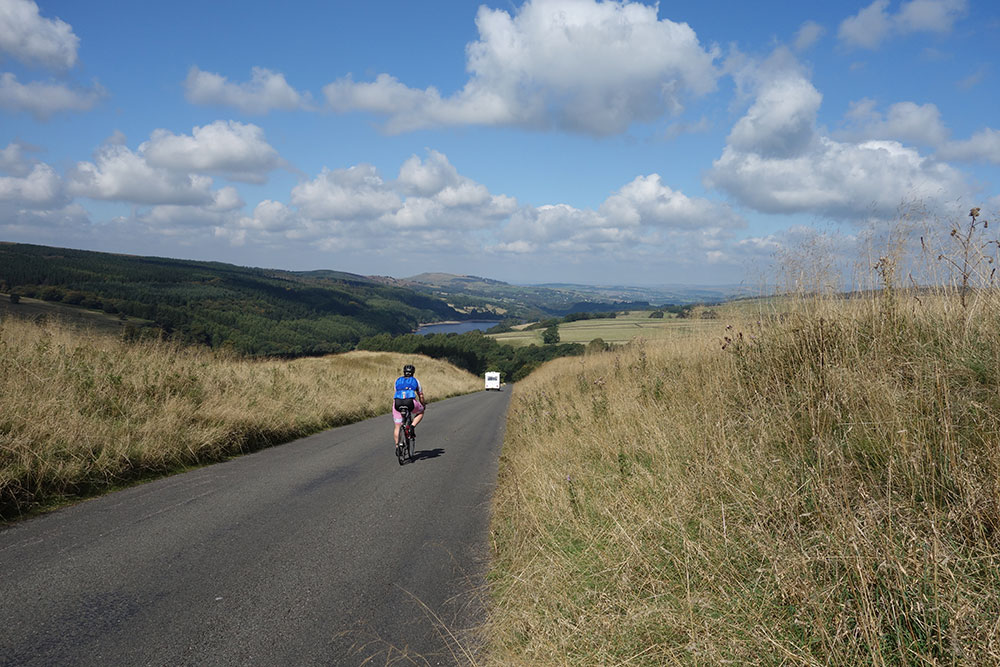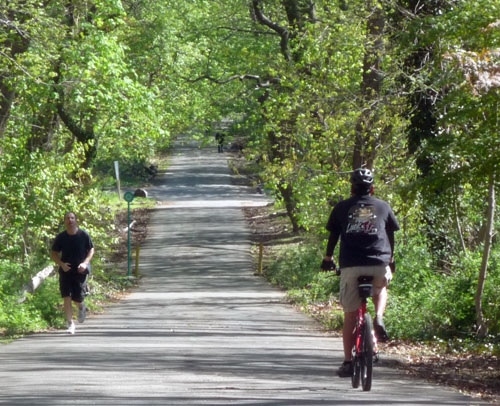I used to do recovery rides at 18 mph, I now seem to do them at 14-15mph – is this a sign of progress? I’m not sure, but probably is. Earlier this year, my recovery rides got as low as 11mph, a combination of NY traffic lights every 50m and the American heat.
The basic principle of recovery rides is to make sure your muscles do actually recover from the micro tears that you subjected them to in harder rides the day before. Hard training only works, if there is sufficient recovery afterwards. The temptation for the over-enthusiastic rider is to ride hard every day and never allow the super-compensation to occur. Using a power meter for the first time this year was of interest. One thing that stood out is that if you want to get a higher power figure, you needed a good period of recovery. It was after this 2-3 days of recovery that you saw higher power figures. Bashing yourself everyday gives a plateau at best. It reminded me of the Obree Way – Obree used to train incredibly hard and then wait 3-5 days to train again. It seemed ridiculously minimalist training and I thought I’d never want to train once or twice a week, but I can understand why it worked now.
How hard to do recovery rides?
I don’t particularly like wearing heart rate monitors, so only do when necessary. On a low intensity recovery ride, 60% of maximum heart rate is a rough guide to avoid going too hard. For me, this is often coming back at an average speed of around 15mph. I do recovery rides purely on feel, and don’t really look at a computer. It is an effort, where you could engage in light conversation without getting out of breath. In terms of power, they tend to be in the range of 100-200 watts. (with a rough threshold one hour power of around 320 watts)
Are recovery rides better than sitting on the couch?
Sometimes it’s good to have a complete day off the bike, if only for the mental and psychological break. But, generally, low intensity recovery rides can be better than doing nothing. Gordon Wright felt that these rides were of substantial benefit.
- Firstly low intensity rides help a good blood circulation to the legs to aid in recovering the muscles.
- Low intensity rides help prevent the muscles closing down and really going into rest mode. This means that your next training session will be more profitable. (This principle is why Grand tour riders can go out for up to 3 hours on their ‘rest’ day.
- Aerobic conditioning. If you are an endurance athlete, any small improvement in base aerobic fitness can help general base fitness. As a very rough rule of thumb, the pyramid principle suggests most training should be done at a low intensity. Smaller quantities at the highest intensity. If you are a time pressed athlete, you could ditch some of the low intensity rides and focus on the intervals, but if you have the time, low intensity can help. I see it as the Yin and Yang approach. On the one hand, really intense intervals which stretch the body out of its comfort zone and limits – to act as a balance, steady low intensity riding.
Long slow steady training (LSS)
Long slow steady training can enhance capillary development and improve aerobic fitness. It is a time intensive training method. It gives very gradual improvements over time. In fact, it can take several years for the aerobic benefits to accumulate. It explains why marathon runners are perhaps more successful at a higher age.
How fast to train in winter?
“It’s just trying to be 95, 97 per cent all year and constantly working. The only downside is that it’s mentally difficult, but up to now I’ve found it pretty good.
Although he gives no details, it sounds like Team Sky don’t just do long slow steady rides.
Conclusion
Recovery rides are good, but they need to be recovery rides and not 19mph + efforts. It can take a bit of discipline to keep at low intensity – especially, if you’re in a group. But, I do feel these easy rides are very important, not matter what you are doing.
Related



1 thought on “Recovery rides”